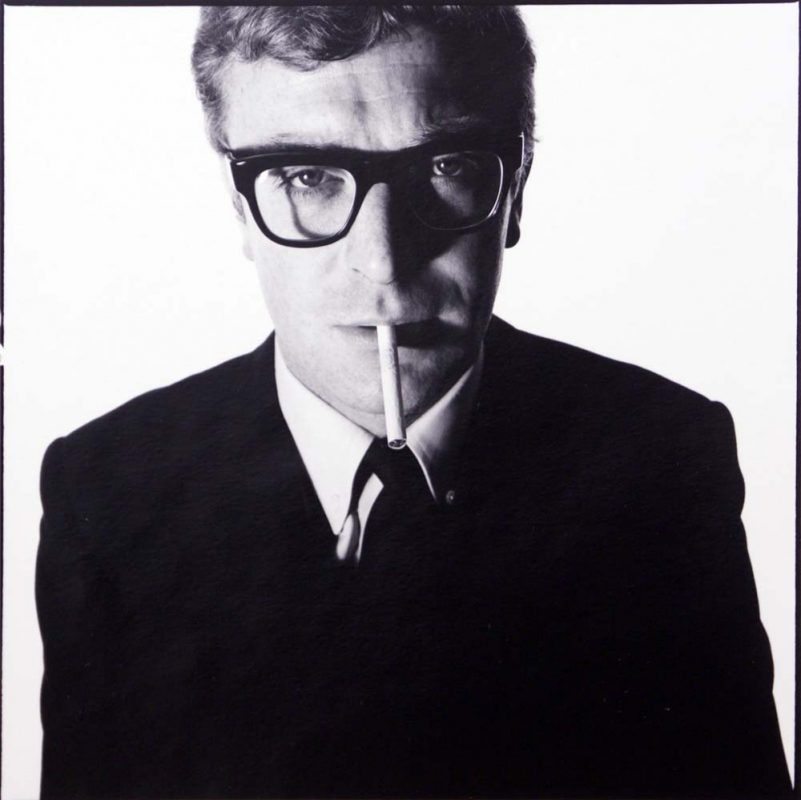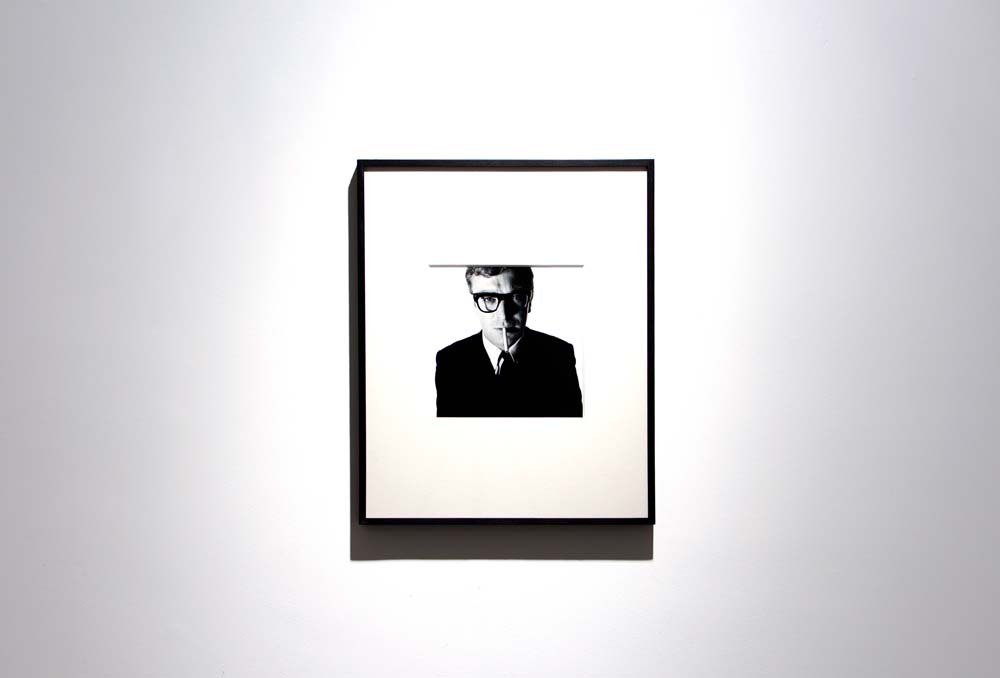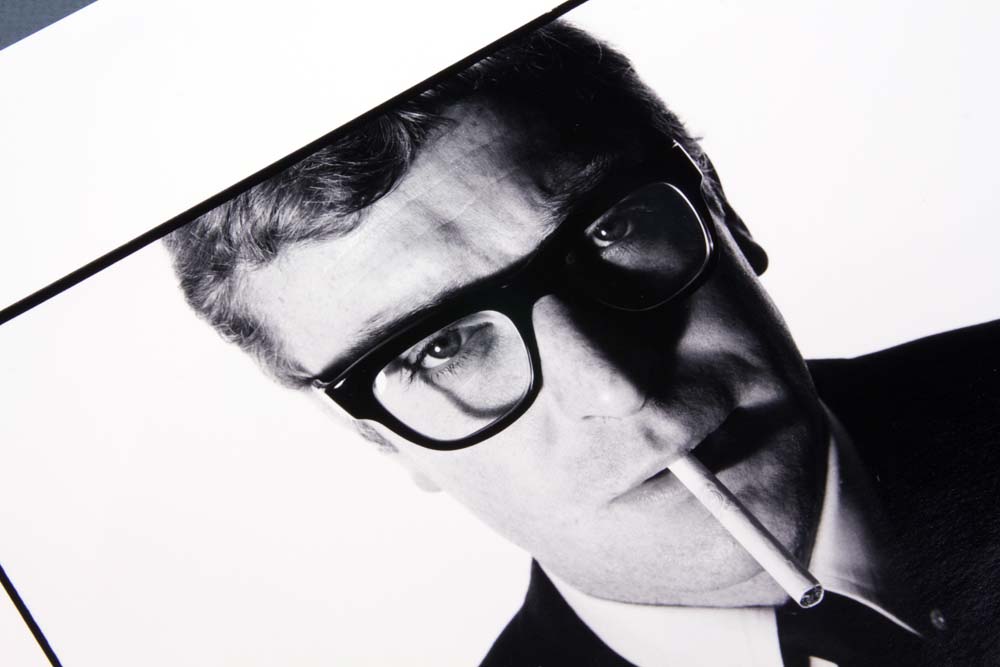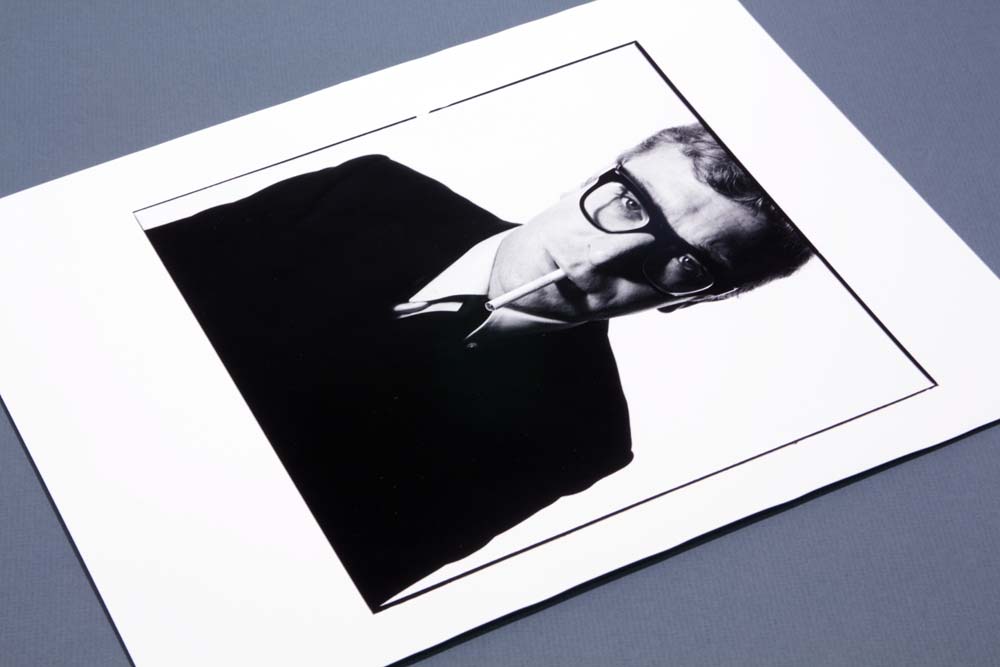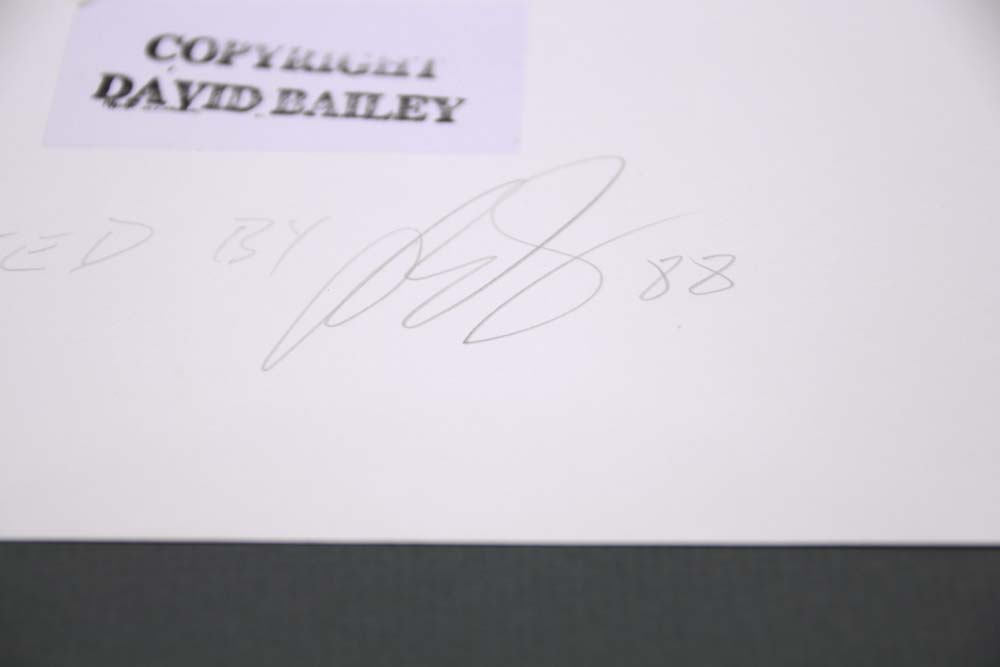Michael Caine, 1965
DAVID BAILEY
Signed, numbered and stamped with photographer's copyright ink stamp on reverse
Silver gelatin print, printed 1988
8 7/8 x 8 7/8 inches

David Bailey stands among the most famous British photographers of recent history, and his seismic work, largely shot for British Vogue during the second half of the twentieth century, contributed towards the formulation of London as the global creative centre it is known as today. Whilst his fashion work remains highly revered, it is Bailey’s portraiture that truly captures Britain’s collective memory of the 1960s.
By 1965, the date of this striking portrait of actor Michael Caine, Bailey had already enjoyed rapid and considerable success, having graduated from being John French’s studio assistant to become a key figure of British Vogue. The present portrait of Caine was taken during the shoot for a portfolio of 36 portraits known as Bailey’s Box of Pop Ups. Published in 1965, the portfolio celebrated key figures in society and culture at the time. The photographs embody the scene that had formulated around the hallmarks of 1960s visual culture: Minis, Mary Quant designs and Vidal Sassoon hairstyles.
The largely male-dominated selection denoted a Who’s Who of the ‘Swinging Sixties’, including John Lennon and Paul McCartney, Mick Jagger, Andy Warhol, David Hockney and Terence Stamp – and courted controversy for its inclusion of the East End ‘Firm’, the Kray twins. It was a portrait of Britain that offered up no context for its protagonists – who were presented in high contrast against Bailey’s characteristically stark, white backgrounds. Each sitter faced off with the photographer’s irreverent lens, their form filling the entire frame.
Whilst his fashion work remains highly revered, it is Bailey’s portraiture that truly captures Britain’s collective memory of the 1960s.
In the early 1960s, Michael Caine was a particular affiliate of Bailey’s, both having stemmed from working-class backgrounds. Bailey was born in Leytonstone in 1938, and experienced a typical wartime childhood. The decade of the 1960s brought with it a shift from post-war attitudes to class, and Caine’s cockney accent quickly became a defining contribution to his popular culture persona. Bailey, alongside working-class peers Terence Donovan and Brian Duffy, used their experiences to offer new perspectives on the urban environment and its protagonists. Of the decade, Bailey has suggested: “It was really a working-class revolution… It was the first time people like me and Michael Caine had a voice. Before that, if you came from East Ham, you stayed in East Ham.” What brought them especially closer, was that Caine and Bailey both inhabited relaxed, irreverent personas which belied extremely hard-working dispositions. Bailey’s intimate portrait of Caine consequently represented a new mode of self-presentation.
This print is exemplary of the strong black and white contrast for which Bailey is celebrated, and is one of nine prints that the photographer printed of this image in 1988.
